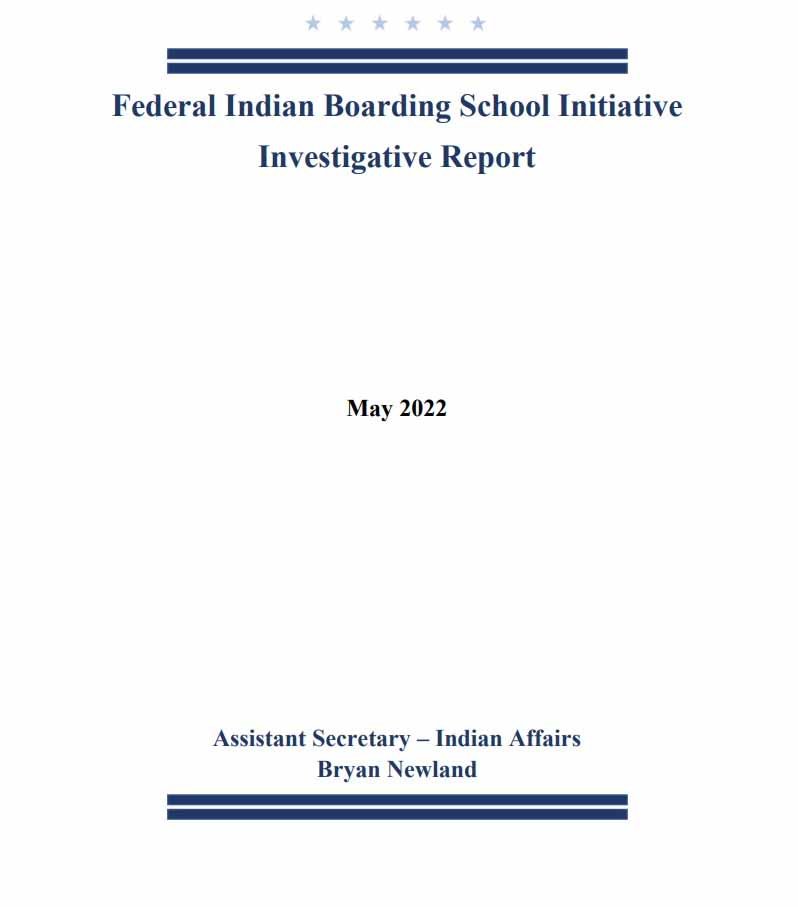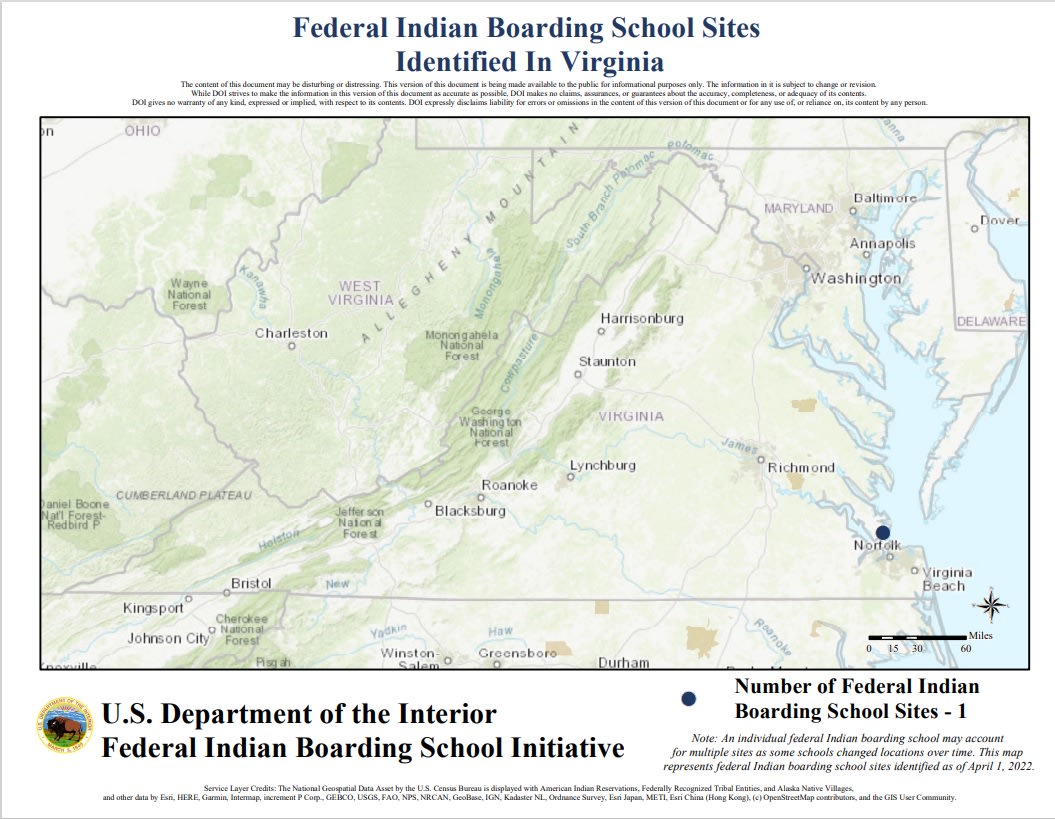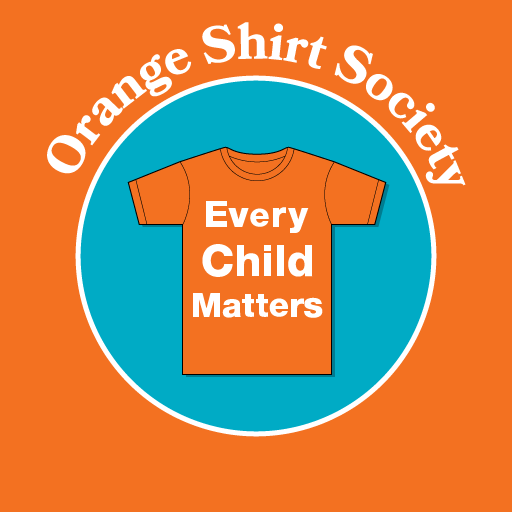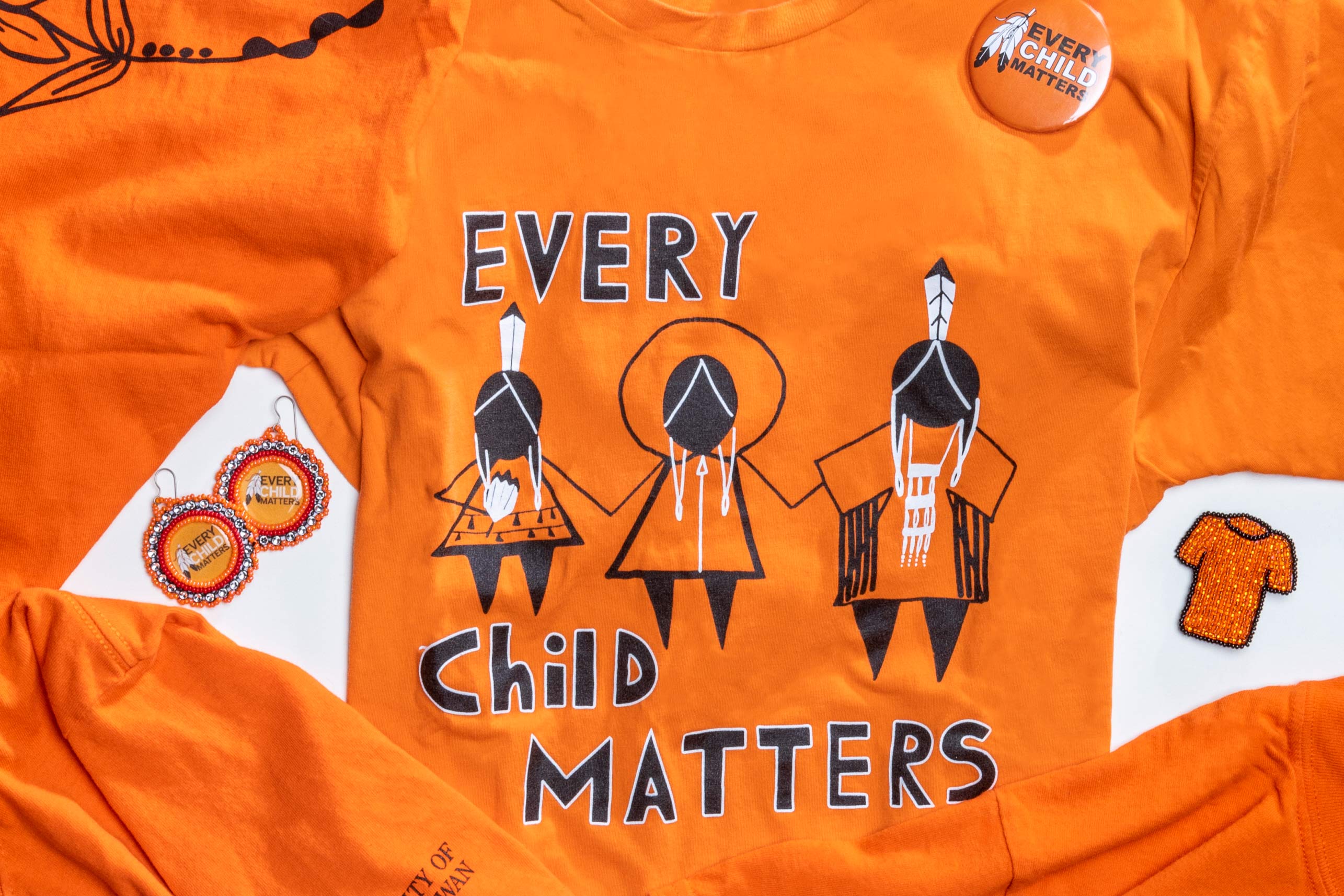Throughout the nineteenth and twentieth centuries in the U.S. and Canada, these two federal governments oversaw the operation of boarding (their name in the U.S.) and residential (their name in Canada) schools. These “Indian schools” removed Indigenous children from their communities, often via force or coercion, with the specific intent of assimilating them into the dominant society and eliminating “the Indian problem” for good.
The boarding and residential school era has typically been dated from the 1880s. This is due to the prevailing narrative that the Carlisle Indian School in Pennsylvania, which opened in 1879, was the primary pattern for all of the other schools. It was one of Carlisle’s founders, Richard Henry Pratt, who gave a speech in 1892 outlining his project for assimilation, part of which was to "Kill the Indian in him, and save the man."

However, the 2022 Bureau of Indian Affairs (BIA) report dates the U.S. Federal Indian boarding schools’ period even earlier than ever before, to 1801. And this is just a preliminary report. The Bureau has more work to do still. William & Mary’s Brafferton Indian School, which opened in the early 1700s, may not have been included in this iteration of the report due to the fact that it wasn’t initially run by the U.S. government, having instead been funded in England by a private estate and a Royal Charter. However, it is still linked to this governmental policy legacy in the minds of many Indigenous community members as well as members of the general public.

Hampton Institute (now Hampton University) is listed in the BIA report as opening an Indian school in 1878. Indigenous children from far away were brought here to eastern Virginia, as part of the point of the boarding schools was to remove these children from their communities and assimilate them into the dominant society. While their first 17 students were male and from Plains tribes, the school eventually taught male and female students from 65 different tribes.

Orange Shirt Day began in 2013 as a grassroots movement to raise awareness and show support, and it is now a federal holiday in Canada, observed on September 30th, also known as the National Day for Truth and Reconciliation. While officially it is one day on the calendar, functionally, people wear orange shirts and orange shirt pins that whole week to show their support for survivors of this program. Additionally, the orange shirts and orange shirt pins are worn any time public sentiment is focused on supporting Indigenous peoples, such as when 215 graves of Indigenous children were found at the Kamloops Indian Residential School in Canada last summer.

This movement is alive in the United States as well. While we may not have a national holiday for it yet, many Indigenous community members and allies show support by joining in the Orange Shirt Day movement with Canadians. The slogan is “Every Child Matters,” and it is a clear rallying point. Deb Haaland is the first Native American Secretary of the Interior, and as such, she oversees the BIA. She saliently ordered a report on U. S. boarding schools, which will take several years to compile. However, preliminary findings were published this May of 2022. The document, with all its components, is over a thousand pages long and includes appendices itemizing information on each school, and maps them by state. It discusses some of the tribal consultations they engaged in as part of their data collecting process, and offers a brief list of conclusions, highlighting areas of research that still need to be conducted.

So, if you see people wearing orange shirts and pins out and about this September 30th, know that it is in support of the Indian boarding and residential school survivors of the U.S. and Canada.
Fallon Burner is the Assistant Research Historian in CW’s Historical Research and Digital History department. She is an Atlantic World historian specializing in histories of Indigenous peoples in the Eastern Woodlands. The topic of her master’s thesis is the history of the languages and revitalization movements in the Wendat Confederacy, spanning the U.S. and Canada.
Further Reading
“‘Kill the Indian in him, and save the man’: R.H. Pratt on the Education of Native Americans.” Carlisle Indian School Digital Resource Center. https://carlisleindian.dickinson.edu/teach/kill-indian-him-and-save-man-r-h-pratt-education-native-americans.
Armstrong, Samuel Chapman (1839-1893). 1883. The Indian question…. Hampton, Virginia: Normal School Steam Press. Available through: Adam Matthew, Marlborough, American Indian Histories and Cultures, http://www.aihc.amdigital.co.uk/Documents/Details/Ayer_389_H2_A7_1883, (Accessed September 21, 2022).
Bureau of Indian Affairs. “Federal Indian Boarding School Initiative.” U.S. Department of the Interior, 2022. https://www.bia.gov/service/federal-indian-boarding-school-initiative.
Deerchild, Rosanna. Unreserved. Podcast. “Making the most of the National Day for Truth and Reconciliation.” Aired Sept 24, 2022 on CBC radio. https://www.cbc.ca/listen/live-radio/1-105/clip/15938509.
Hultgren, Mary Lou., Paulette Fairbanks. Molin, and Rayna. Green. To Lead and to Serve: American Indian Education at Hampton Institute, 1878-1923. Charlottesville: Virginia Foundation for the Humanities and Public Policy in cooperation with Hampton University, 1989.
Krupat, Arnold. Changed Forever: American Indian Boarding-School Literature. 2 Volumes. Albany: SUNY Press, 2018 and 2020.
Newland, Bryan, Assistant Secretary of Indian Affairs. Federal Indian Boarding School Initiative Investigative Report. United States: Department of the Interior Bureau of Indian Affairs, May 2022.
Orange Shirt Day: September 30th. Edited and approved by Phyllis Webstad and Joan Sorley. Canada: Orange Shirt Society, 2020.
Orange Shirt Society. https://www.orangeshirtday.org/.
Sudlow, Helen W. “Indian education at Hampton and Carlisle.” Harper’s New Monthly Magazine. New York, 1881. http://www.aihc.amdigital.co.uk/Documents/Details/Ayer_389_H2_L9_1881.
Szasz, Margaret Connell. Indian Education in the American Colonies, 1607-1783. Albuquerque: University of New Mexico Press, 1988.
Truth and Reconciliation Commission Reports. Manitoba, Canada: National Centre for Truth and Reconciliation, 2015-2016. https://nctr.ca/records/reports/.
Colonial Williamsburg is the largest living history museum in the world. Witness history brought to life on the charming streets of the colonial capital and explore our newly expanded and updated Art Museums of Colonial Williamsburg, featuring the nation’s premier folk art collection, plus the best in British and American fine and decorative arts from 1670–1840. Check out sales and special offers and our Official Colonial Williamsburg Hotels to plan your visit.
